
Roots
From the deepest wellspring of our being, where life’s first spark ignites, the story of textured hair begins. It is a narrative etched not merely in time, but within the very blueprint of existence, in the subtle contours of a tiny, yet powerful, structure ❉ the hair follicle. This exploration journeys into the elemental understanding of how these minute organs shape the magnificent diversity of textured hair, grounding its scientific workings within the rich soil of ancestral knowledge and Black and mixed-race heritage. We approach this subject as one would a cherished elder, with reverence and a keen desire to comprehend the wisdom held within each strand, recognizing that the biological facts are but echoes of a grander, inherited saga.
The follicle, a pocket of skin from which hair grows, acts as the primary sculptor of our curls, coils, and waves. Its particular geometry, a legacy passed through generations, determines the very inclination of each hair fiber. Understanding this foundational aspect of hair science is not a detached academic exercise; it is a communion with the past, a recognition of the biological heritage that connects us to our forebears and the vast expanse of human diversity.

Hair’s Elemental Architecture
The intricate dance of biology dictates the outward expression of our hair. At the heart of this dance lies the Hair Follicle, a complex organ nestled within the dermal layer of the skin. The shape of this follicle directly influences the curl pattern of the hair shaft that emerges. For those with straight hair, the follicle tends to be round, allowing the hair to grow in a linear fashion.
In contrast, textured hair, with its remarkable spectrum of waves, curls, and kinks, springs from follicles that are oval or even flat in cross-section. This unique, often S-shaped curvature of the follicle itself guides the hair’s growth in a spiral, producing the distinctive patterns we admire.
Beyond the follicle’s shape, the distribution of Keratin, the primary protein composing hair, and the arrangement of its disulfide bonds also contribute to the hair’s final form. These bonds act as internal scaffolding, holding the hair’s shape. In textured hair, these bonds are more numerous and unevenly distributed along the hair shaft, encouraging the strand to bend and coil upon itself. This biological marvel is a testament to the adaptive genius within our genetic code, a heritage that speaks of resilience and a profound connection to the earth’s varied climates and ancestral environments.

Ancient Understandings of Hair
Long before modern science peered into the microscopic world of the follicle, ancestral communities held deep, intuitive understandings of hair and its variations. Across pre-colonial African societies, hair was far more than mere adornment; it was a living symbol, a medium of communication, and a repository of identity and status. The recognition of different hair types and their inherent characteristics was woven into daily life and communal practices.
The fundamental shape of the hair follicle is a biological inheritance, a silent whisper from our ancestors dictating the natural inclination of each textured strand.
While the term ‘follicle shape’ was not part of their lexicon, traditional hair care practices, passed down through oral traditions and hands-on learning, implicitly acknowledged the distinct needs of textured hair. For instance, the use of rich oils, butters, and herbs, often sourced from local botanicals, aimed to lubricate and protect the hair, intuitively addressing the unique moisture requirements of hair with higher curl density. This deep respect for the hair’s natural state, born from generations of observation and practice, speaks volumes about an ancestral wisdom that honored what the body naturally produced.
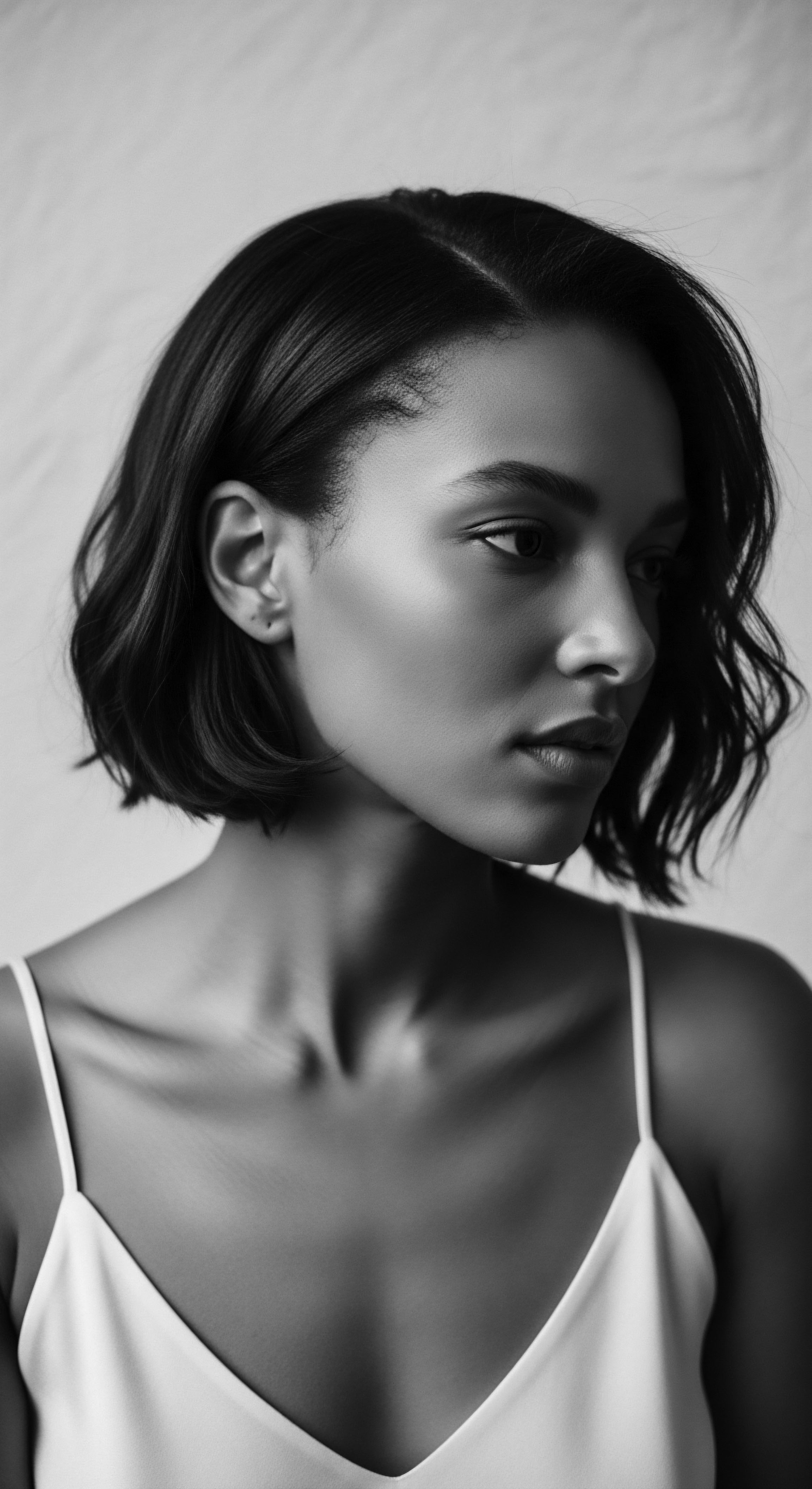
Classifying Hair’s Rich Diversity
Modern classification systems, such as those that categorize hair into types 1 through 4 (with subcategories a, b, c), attempt to map the spectrum of hair textures, from straight to coily. While these systems offer a useful framework for product development and communication, they can sometimes fall short of capturing the full spectrum of hair’s diversity and its cultural context. Historically, communities categorized hair not by numerical type, but by its social meaning, its spiritual resonance, or its familial connection.
- Yoruba Hair Symbolism ❉ In Yoruba cosmology, hair is considered sacred, a conduit for spiritual energy that links individuals to their ancestors and deities. Hairstyles often communicated roles within the community, marital status, or life events.
- Himba Ochre Styles ❉ The Himba tribe of Namibia uses a mixture of red ochre paste and butterfat on their dreadlocked styles, symbolizing their connection to the earth and their ancestors. This practice speaks to a classification beyond mere curl, recognizing hair as a canvas for cultural expression.
- Wolof Braiding as Communication ❉ In the Wolof culture of Senegal, hairstyles could signify marital status, age, or even a woman waiting for her husband’s return from war. The hair’s style, rather than its curl type, became the primary marker of identity and belonging.
This historical approach to understanding hair was deeply rooted in communal identity and spiritual beliefs, offering a perspective that transcends the purely anatomical. The contemporary lexicon of textured hair, while incorporating scientific terms, gains profound depth when infused with these ancestral meanings, allowing us to appreciate the enduring heritage of our strands.

Ritual
As we move from the foundational whispers of the follicle, we step into the living archive of practice and purposeful motion. This “Ritual” section acknowledges the reader’s deep desire for practical wisdom, for understanding how the inherent nature of textured hair, shaped by its follicle, has been honored and adorned through the ages. It is an invitation to witness the tender, knowing hands of our ancestors and contemporaries, guiding strands into forms that protect, express, and celebrate. We delve into the techniques and methods for nurturing textured hair, always with a profound respect for the enduring traditions that inform our choices today, revealing how the follicle’s gift has inspired a wealth of ancestral and contemporary care.
The rituals surrounding textured hair care are not simply routines; they are acts of remembrance, connecting us to a lineage of care that adapted to the unique characteristics of hair springing from curved follicles. These practices, honed over millennia, reveal an intuitive understanding of hair’s delicate balance and its need for thoughtful handling.

How Do Ancestral Styles Protect Hair Follicles?
Protective styles, a cornerstone of textured hair care today, possess a rich and ancient lineage. These styles, which include Braids, Twists, and Locs, were not merely aesthetic choices in pre-colonial African societies; they served vital functional roles, shielding the hair shaft from environmental damage and minimizing manipulation, thereby preserving the health of the follicle and the length of the hair. The very act of braiding, a communal practice often shared among family members, fostered social bonds and passed down cultural traditions across generations.
Consider the Cornrow, a style dating back as far as 3000 B.C. in regions like the Horn and West coasts of Africa. These intricate patterns, braided close to the scalp, provided a secure, low-tension environment for the hair, allowing it to rest and retain moisture.
The meticulous sectioning and braiding techniques, often performed with natural oils and butters, implicitly understood the follicle’s need for a stable, undisturbed environment to flourish. This ancestral wisdom recognized that a healthy hair shaft begins with a healthy follicle, a principle that remains central to modern textured hair care.

Traditional Styling Methods and Their Legacy
The methods for styling and defining textured hair have evolved, yet many contemporary techniques echo ancient practices. The application of natural substances to enhance curl definition or provide hold is a practice deeply rooted in ancestral knowledge. For instance, the use of plant-based ingredients like Clay, Herbs, and various Oils (such as palm kernel oil or shea butter) were common in pre-colonial Africa for hair care and adornment. These ingredients, often rich in emollients and nutrients, helped to condition the hair, providing suppleness and a natural sheen, while working with the hair’s inherent curl pattern dictated by the follicle.
The cultural significance of these styling rituals extends beyond aesthetics. Hairstyles served as visual markers, communicating age, marital status, social rank, and even spiritual beliefs within various African ethnic groups. The Yoruba people, for example, crafted elaborate styles like “Irun Kiko” (a form of thread-wrapping) that conveyed meanings related to femininity and rites of passage. These traditional methods, though perhaps not framed in scientific terms, were sophisticated applications of material and technique, intuitively working with the hair’s unique structure.
| Ancestral Ingredient Shea Butter |
| Traditional Application for Textured Hair Used as a moisturizer and sealant, often applied to braids or twists to retain moisture. |
| Contemporary Link to Follicle Health/Hair Care Rich in fatty acids and vitamins, it continues to be valued for its emollient properties, supporting scalp health and minimizing dryness that can affect the follicle. |
| Ancestral Ingredient African Black Soap |
| Traditional Application for Textured Hair Used for gentle cleansing of hair and scalp. |
| Contemporary Link to Follicle Health/Hair Care Known for its purifying qualities, it helps maintain a clean scalp environment, crucial for unobstructed follicle function and hair growth. |
| Ancestral Ingredient Chebe Powder |
| Traditional Application for Textured Hair A Chadian tradition for hair strength and length retention, applied as a paste. |
| Contemporary Link to Follicle Health/Hair Care Believed to fortify the hair shaft, reducing breakage and allowing hair to retain length, indirectly supporting the hair's journey from the follicle. |
| Ancestral Ingredient Coconut Oil |
| Traditional Application for Textured Hair Used for conditioning, detangling, and scalp massage. |
| Contemporary Link to Follicle Health/Hair Care Its molecular structure allows it to penetrate the hair shaft, providing deep conditioning and reducing protein loss, thus maintaining hair integrity from the root. |
| Ancestral Ingredient These ingredients, passed down through ancestral wisdom, continue to nourish and protect textured hair, acknowledging its inherent characteristics shaped by the follicle. |
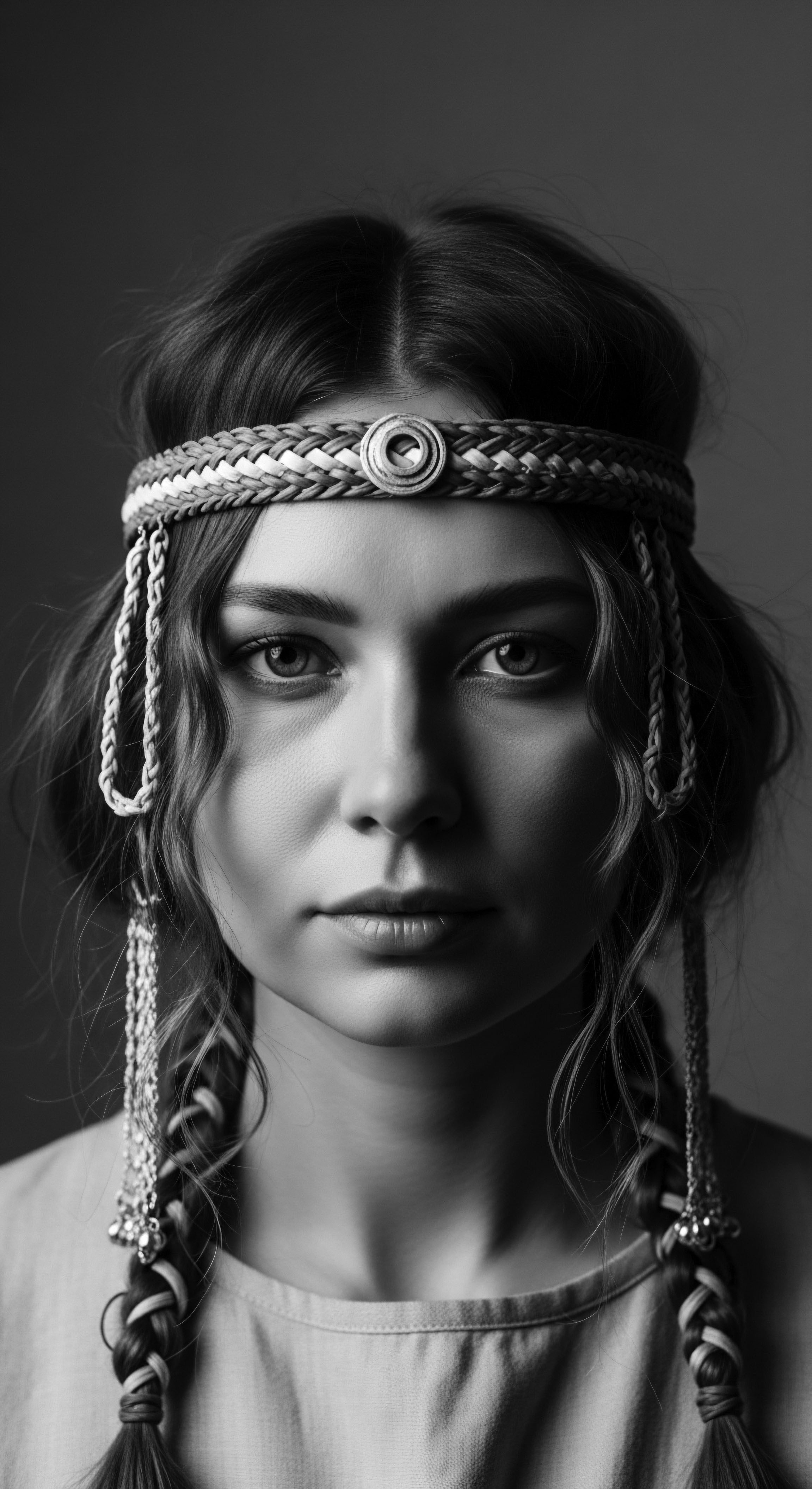
Tools of Adornment and Care
The tools used for textured hair care also possess a deep heritage. From early picks to specialized combs, these implements were crafted to navigate the unique density and curl patterns originating from curved follicles. The Afro Pick, for instance, has origins dating back nearly 6000 years, evolving from functional tools into symbols of cultural pride during movements like the Black Power era. Its wider teeth and longer prongs are perfectly suited to lift and style hair without disrupting the natural curl, a design that respects the hair’s inherent structure.
The meticulous care rituals and styling traditions for textured hair are echoes of ancestral wisdom, intuitively working with the unique biology of the hair follicle.
In enslaved communities, where access to traditional tools was often denied, ingenuity prevailed. Enslaved individuals would fashion combs from whatever materials were available, adapting their practices to preserve their hair and cultural identity. This resourcefulness speaks to the enduring commitment to hair care, even under duress, a testament to the profound connection between hair and selfhood. The history of these tools is a story of adaptation, resilience, and the persistent desire to honor the hair that springs forth from each individual follicle.
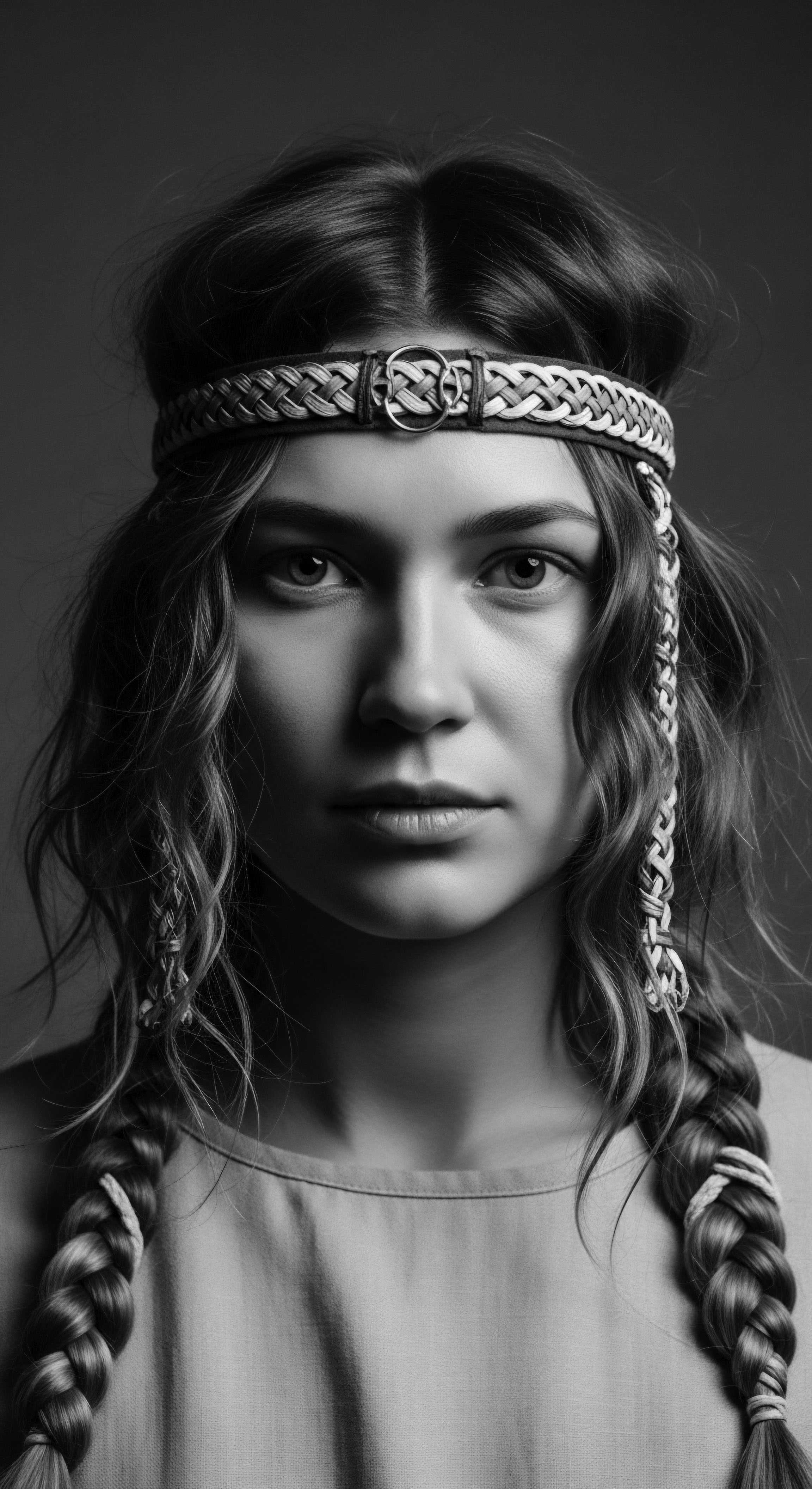
Relay
We now step into a deeper consideration of textured hair, moving beyond its foundational biology and practical rituals to explore its profound role in shaping identity, expressing cultural narratives, and influencing futures. This “Relay” section invites a profound insight, where the elemental science of the hair follicle converges with the intricate details of human experience, cultural meaning, and historical struggle. It is a journey into the less apparent complexities that textured hair unveils when viewed through the lens of heritage, inviting us to consider how the biological gift of the follicle has been a powerful instrument of social commentary, resistance, and enduring beauty across generations.
The very structure of textured hair, determined by the follicle, has not only defined appearance but has also been a silent, yet potent, language. This biological characteristic, inherited through ancestral lines, has served as a canvas for self-expression, a banner of community, and a quiet act of defiance against systems that sought to diminish its inherent worth.
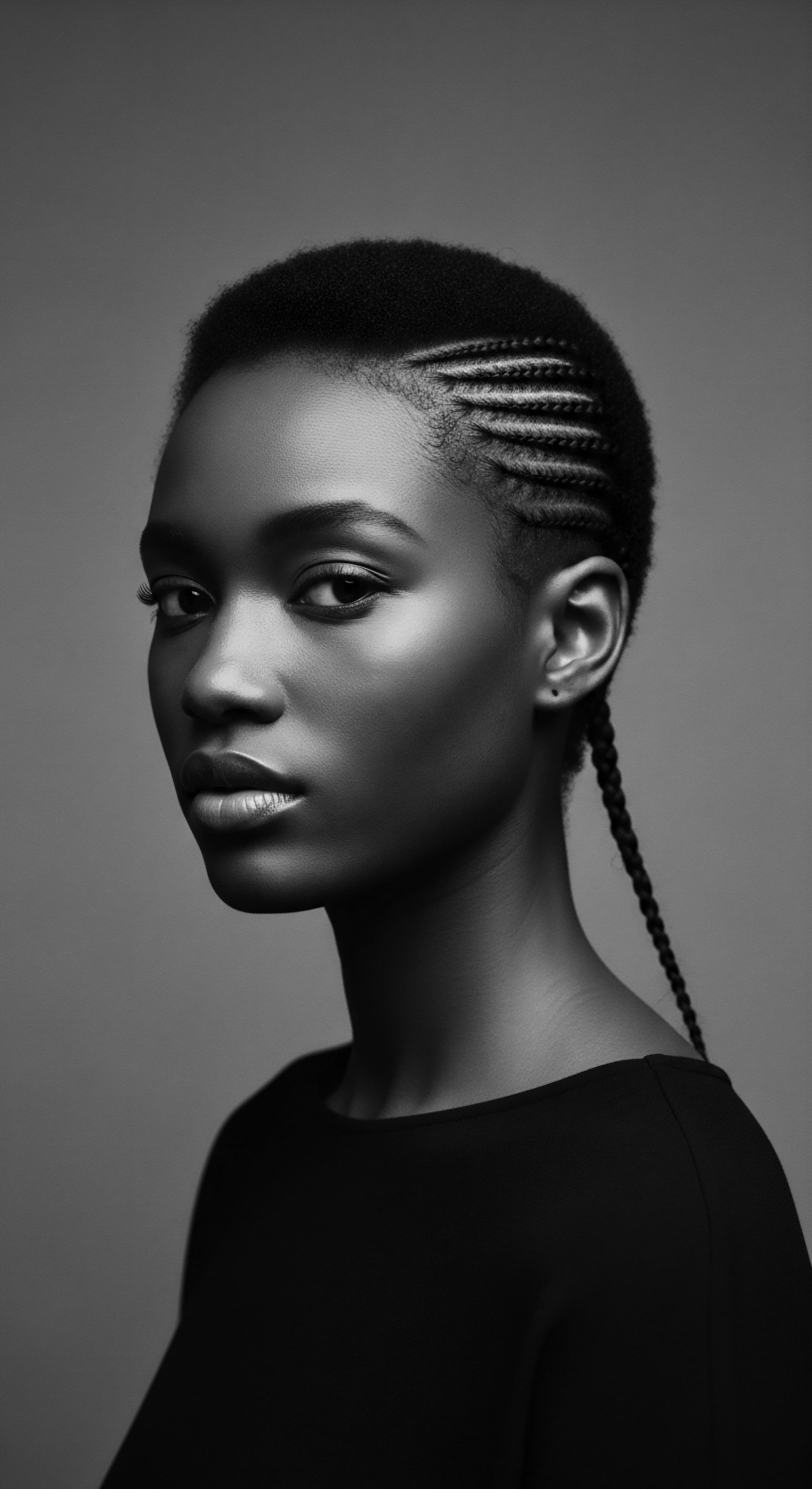
How Does Follicle Morphology Inform Cultural Narratives?
The distinctive morphology of the textured hair follicle, yielding curls and coils, has been inextricably linked to cultural narratives and identity formation across the African diaspora. In pre-colonial African societies, hair was a powerful signifier of social status, marital standing, age, and even tribal affiliation. The specific curl patterns and how they were styled became a visual language, a living archive of community and belonging. This intrinsic connection meant that hair was not merely an aesthetic choice but a profound aspect of one’s public identity, deeply tied to the collective heritage.
During the transatlantic slave trade, this profound connection to hair was brutally attacked. Enslaved Africans were often forcibly shaven upon arrival in the Americas, a deliberate act designed to strip them of their identity, culture, and connection to their homeland. This dehumanizing practice aimed to sever the link between the individual and their inherited follicle-determined hair, and thus, their heritage. Yet, even under such oppressive conditions, the resilience of ancestral practices endured.
A powerful historical example of hair serving as a tool of resistance and communication is found among enslaved Africans in Colombia. During the 17th century, runaway slaves, known as Maroons, utilized intricate cornrow patterns to create and conceal maps of escape routes, indicating paths to freedom or locations of water sources. Rice seeds were also braided into hair, a means of preserving food and cultural continuity during the brutal Middle Passage and in the new, foreign lands. This extraordinary practice, documented by historians, showcases how the very structure of textured hair, springing from its curved follicles, could be manipulated to hold vital information, transforming a biological trait into a strategic asset for survival and liberation.
(Lori Tharps and Ayana Byrd, Hair Story ❉ Untangling the Roots of Black Hair in America, 2001). This historical use of hair underscores its deep functional and symbolic role beyond mere appearance, directly tying the unique qualities of textured hair, shaped by its follicles, to a narrative of resistance and survival.
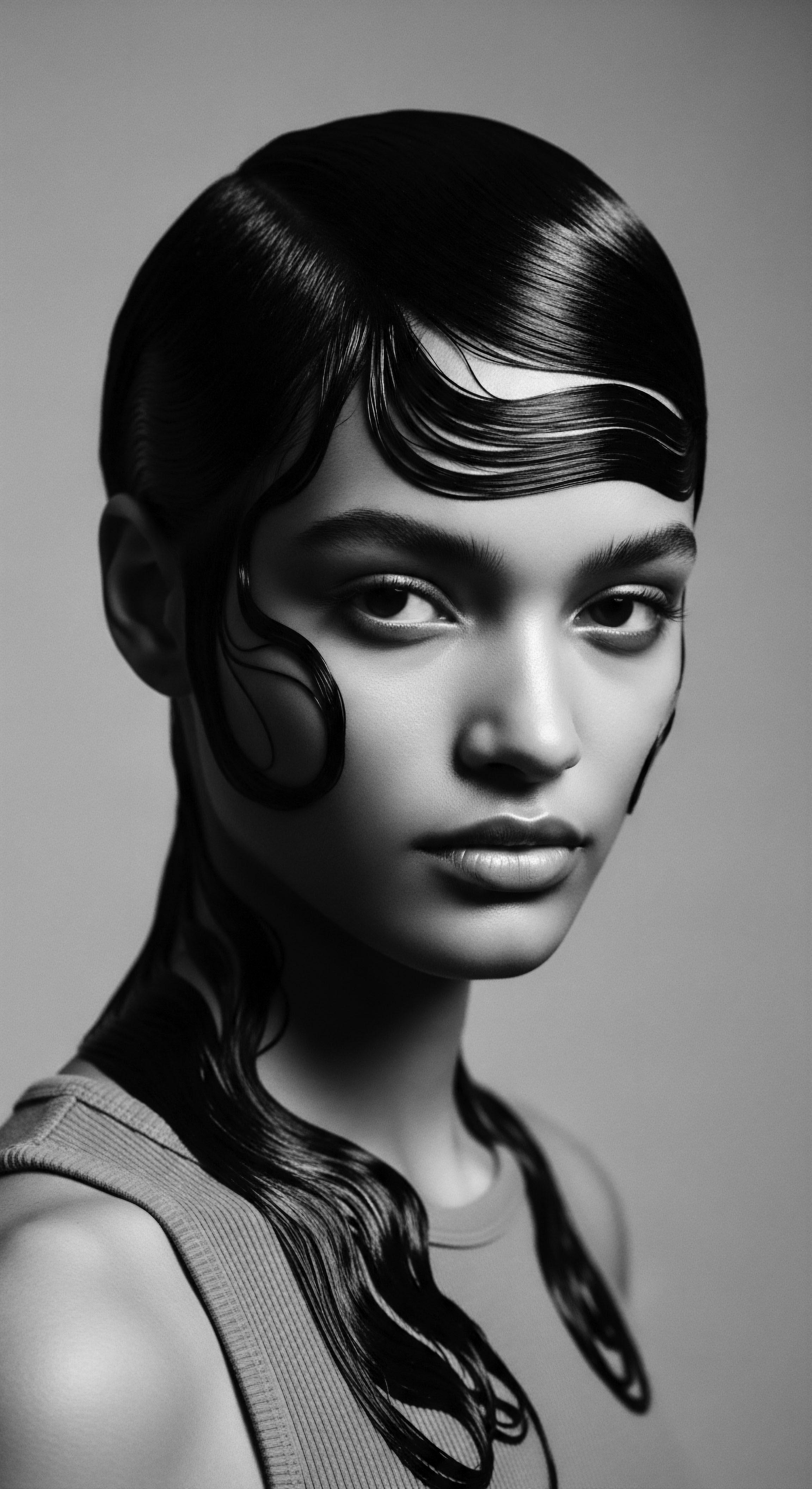
Hair as a Symbol of Resilience and Assertion
The legacy of the hair follicle’s unique shaping power extends into contemporary expressions of Black and mixed-race identity. The Natural Hair Movement, particularly gaining prominence in the late 20th and early 21st centuries, represents a reclamation of inherited beauty and a rejection of Eurocentric beauty standards that long marginalized textured hair. This movement celebrates the inherent curl, coil, and wave patterns, acknowledging the biological diversity that originates from varied follicle shapes.
The Afro hairstyle, which gained prominence during the Civil Rights and Black Power movements of the 1960s, stands as a powerful symbol of defiance and pride. It was a deliberate assertion of Black identity, a visible statement against societal pressures to conform to straightened hair ideals. This embrace of the hair’s natural volume and shape, directly influenced by the follicle’s structure, became a political act, a testament to the strength and beauty of inherited characteristics.
Even seemingly simple accessories carry profound historical weight. The Hair Bonnet, for instance, while a practical tool for hair protection today, holds a complex history. Its origins in African headwraps (known as Dukus and Doek) reflected wealth, ethnicity, and marital status. During enslavement, bonnets were weaponized, used to visibly distinguish Black women as lesser.
Yet, in an act of powerful defiance, Black women transformed these forced coverings into vibrant expressions of creativity and cultural pride, adorning them with beautiful fabrics and embellishments. This transformation speaks to the enduring spirit of resilience, turning a tool of oppression into a symbol of self-assertion, all in the context of protecting and honoring the hair that grows from the follicle.

The Interplay of Science, Society, and Self
The scientific understanding of how follicles shape textured hair continues to evolve, often validating the intuitive wisdom of ancestral hair care practices. Modern research into the genetic factors influencing follicle shape, such as the EDAR Gene and the Hr Gene, provides a deeper biological basis for the diversity observed. These scientific discoveries offer a new lens through which to appreciate the profound variations in hair texture, reinforcing that these are not deviations but natural expressions of human genetic diversity.
The unique architecture of the hair follicle has served as a canvas for cultural expression, a banner of resistance, and a enduring symbol of identity across the diaspora.
The ongoing conversation around textured hair, its biology, and its cultural significance underscores a vital truth ❉ hair is never merely biological. It is a deeply personal and societal phenomenon, interwoven with narratives of heritage, beauty, and justice. The understanding of how follicles shape textured hair becomes a bridge between the microscopic world of cellular processes and the grand narratives of human history and cultural resilience. It allows us to appreciate the scientific precision behind the beauty we see and the historical depth behind the care we give, fostering a deeper connection to our individual strands and the collective legacy they represent.
- Genetic Markers ❉ The EDAR Gene influences hair thickness and density, while the Hr Gene determines the shape of hair follicles, directly impacting curl patterns.
- Protein Structures ❉ Variations in the KRT2 Gene affect the protein structure of hair, influencing its strength and elasticity, which are crucial for maintaining the integrity of textured strands.
- Trichohyalin Protein ❉ The protein Trichohyalin, found in the hair follicle, contributes to the mechanical strength of hair and is associated with variations in hair curl and morphology.

Reflection
As we conclude this meditation on how follicles shape textured hair, we return to the profound understanding that a single strand holds within it the soul of a lineage. The intricate biology of the hair follicle, with its unique curvature and cellular orchestration, is not an isolated scientific fact; it is a living testament to an enduring heritage. Each coil, each wave, each kink is a biological echo from the source, a physical manifestation of ancestral wisdom and resilience. Our exploration has traversed from the elemental workings within the skin, through the tender, knowing rituals of care passed down through generations, to the powerful role textured hair plays in voicing identity and shaping futures.
This journey reveals that the story of textured hair is a boundless archive, continuously being written by the strands that spring forth, carrying the weight of history and the promise of tomorrow. To understand the follicle’s role is to embrace a deeper appreciation for the magnificent diversity of human hair, honoring its past, celebrating its present, and anticipating its unbound potential.
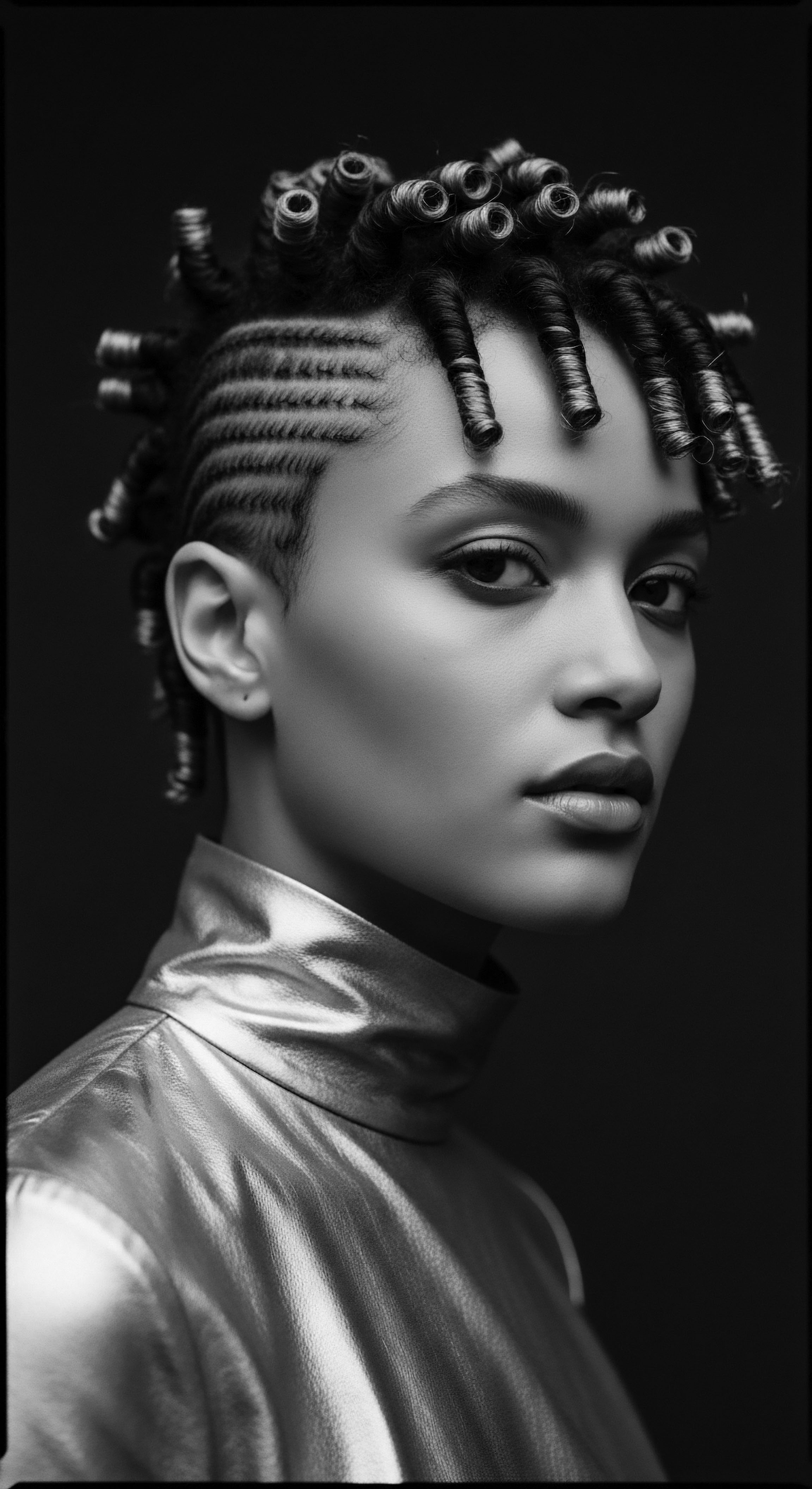
References
- Byrd, A. & Tharps, L. L. (2001). Hair Story ❉ Untangling the Roots of Black Hair in America. St. Martin’s Publishing.
- Tharps, L. L. & Byrd, A. (2014). Hair Story ❉ Untangling the Roots of Black Hair in America. St. Martin’s Press. (Updated Edition)
- Sherrow, V. (2006). Encyclopedia of Hair ❉ A Cultural History. Greenwood Press.
- Davis, A. (1974). Angela Davis ❉ An Autobiography. Random House.
- Hooks, B. (1992). Black Looks ❉ Race and Representation. South End Press.
- Patton, T. O. (2006). Our Own Kind of Freedom ❉ Black Women and the Pursuit of Beauty. Rutgers University Press.
- Mercer, K. (1994). Welcome to the Jungle ❉ New Positions in Black Cultural Studies. Routledge.
- Bundles, A. (2001). On Her Own Ground ❉ The Life and Times of Madam C. J. Walker. Scribner.
- Hall, S. (1997). Representation ❉ Cultural Representations and Signifying Practices. Sage Publications.
- Gale, R. (2007). Hair ❉ Its Power and Meaning in Asian Cultures. Asian Cultural Council.
